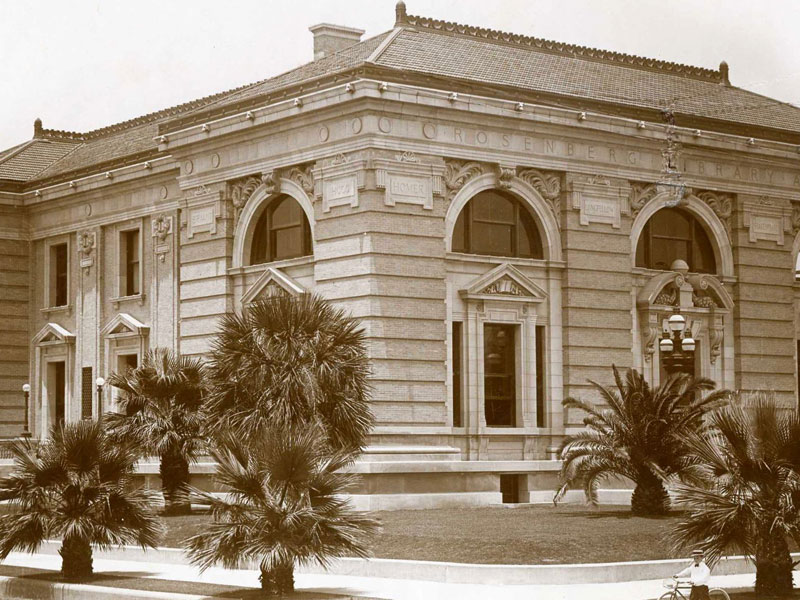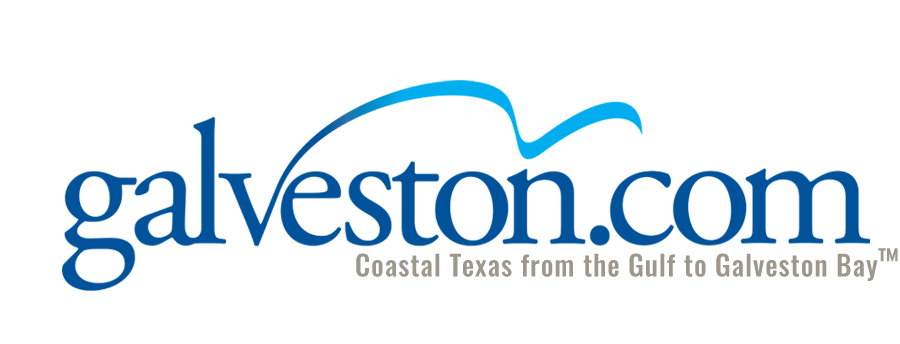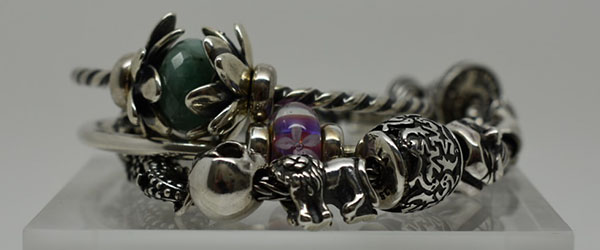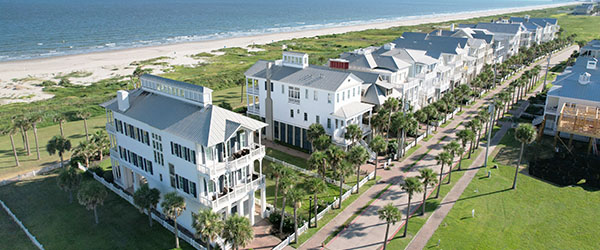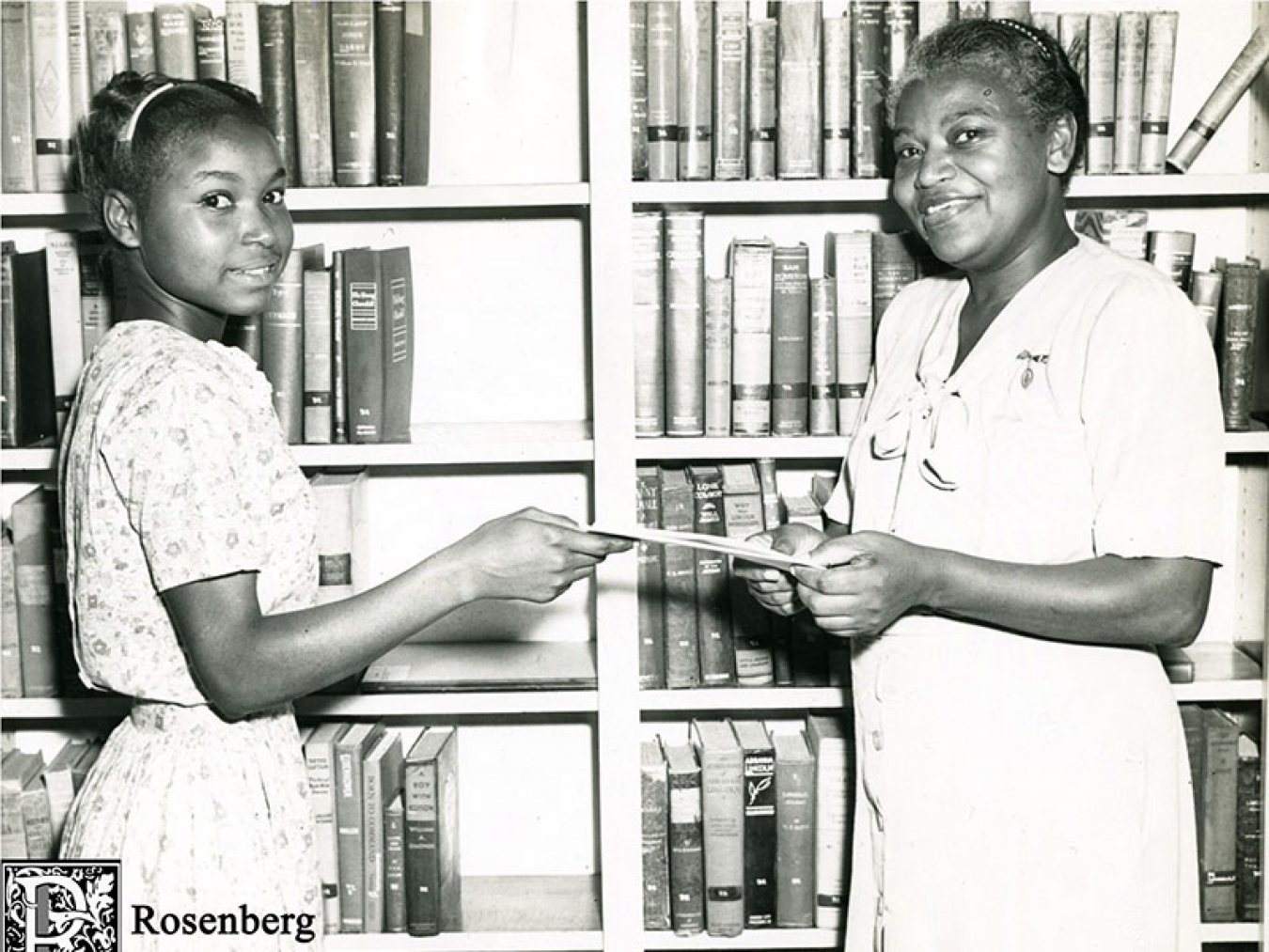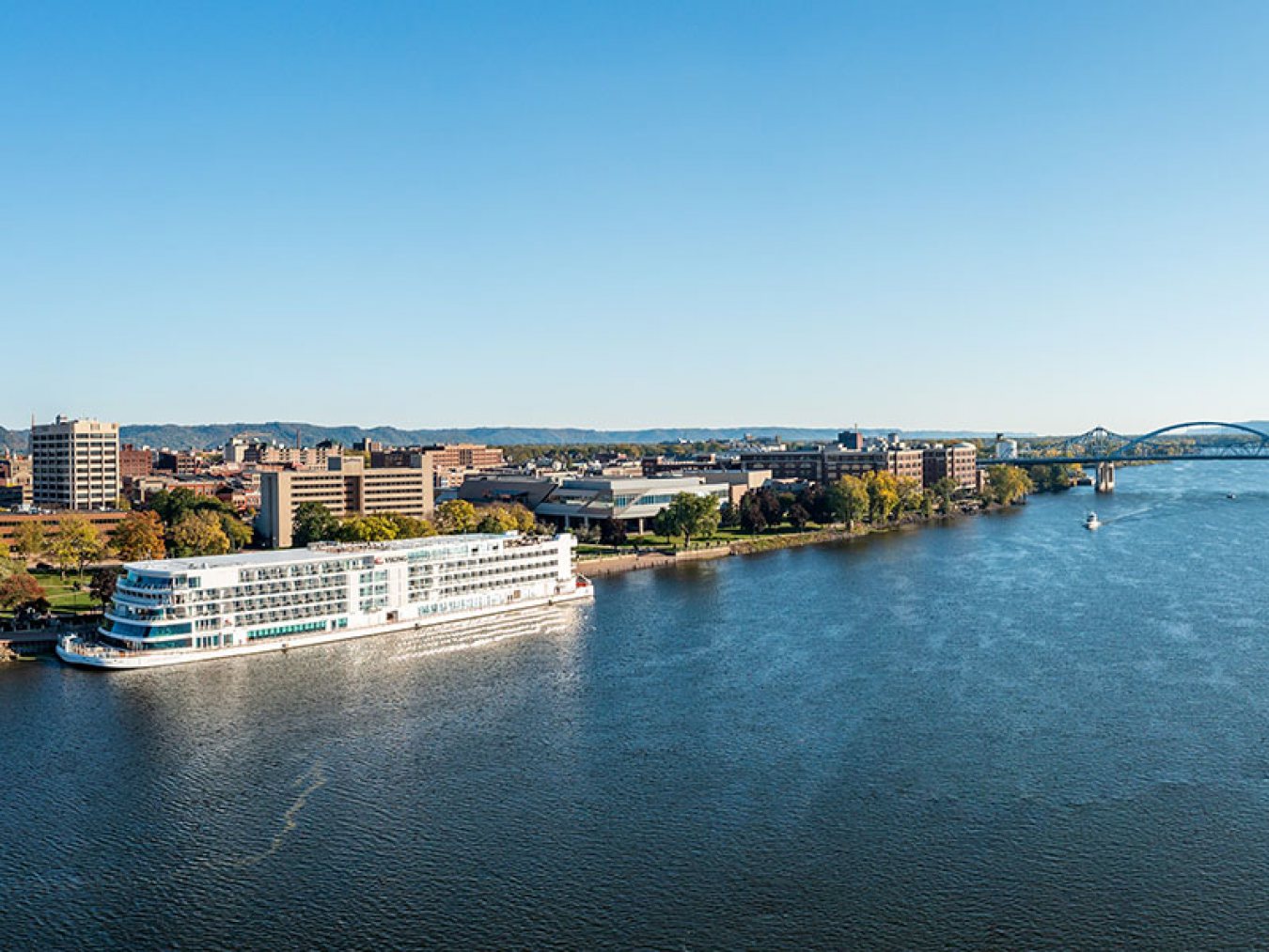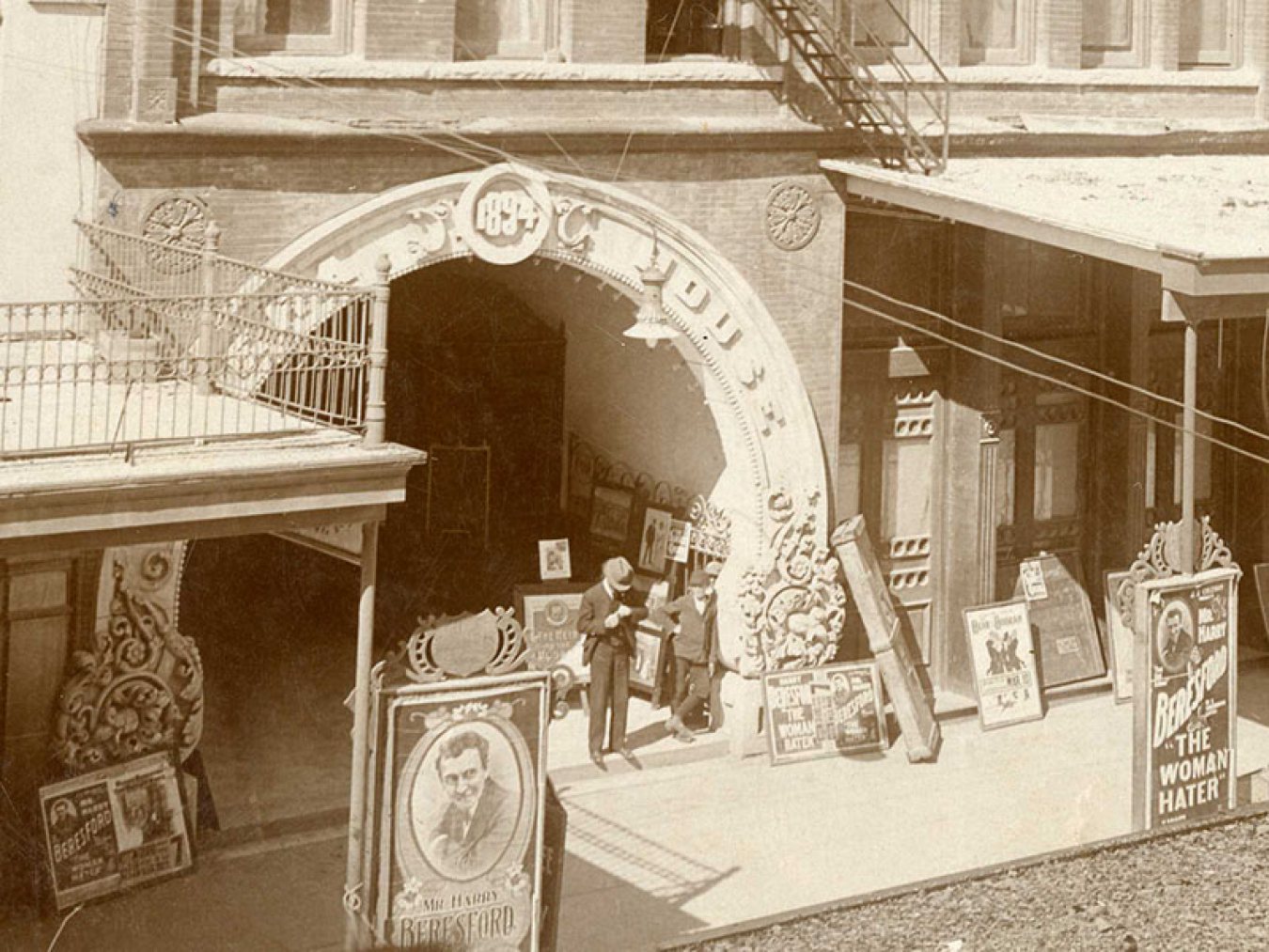History of Trolleys in Galveston
Rosenberg Treasure of the Month
During the month of August, the Rosenberg Library will display trolley memorabilia, including, among many things, a replica of the Galveston Flyer trolley, and coins from the Galveston Electric company.
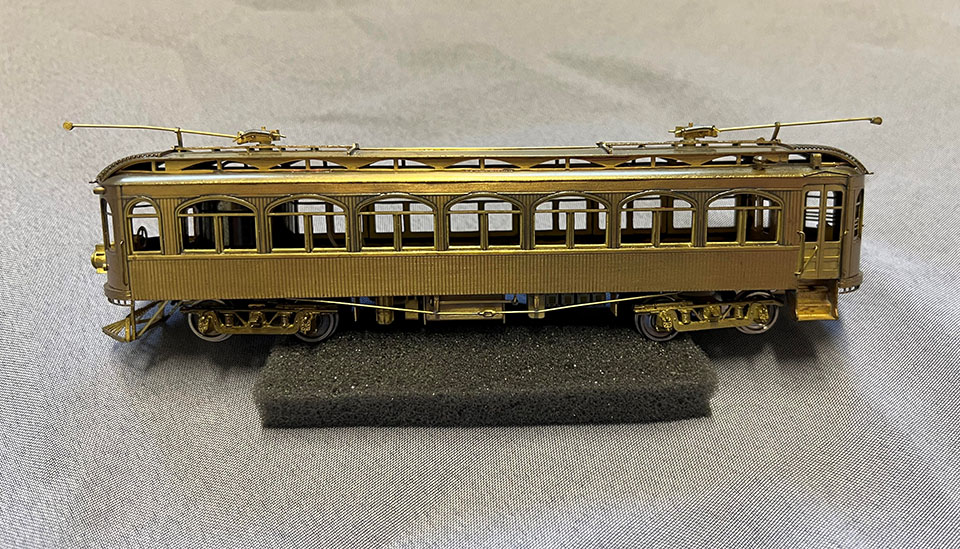
| The Galveston Flyer Houston Rocket is a model replica of the train that made the journey from Houston to Galveston and back again, across the Galveston Causeway. | Courtesy of the Rosenberg Library and Museum |
Galveston’s streetcars appeared as an early form of public transportation in 1866 as a mule drawn car going back and forth along Market Street. The last of the mule driven carts were repurposed or disassembled shortly after the 1900 Storm, though some accounts claim to have seen the last ones in use sometime between 1904 and 1919. Around that same time, Galveston Electric purchased a total of 103 electric streetcars for public transportation. These trolleys ran by using electricity from cables lines that ran overhead. The Galveston Flyer model streetcar also emerged, which ran between Houston and Galveston from 1911 to 1936. Owned by the Galveston-Houston Electric Railway Company, they advertised four departures from Houston and three from Galveston every Sunday, offering various deals to encourage more use. These offers increased the number of visible visitors to the island until the late 1930s.
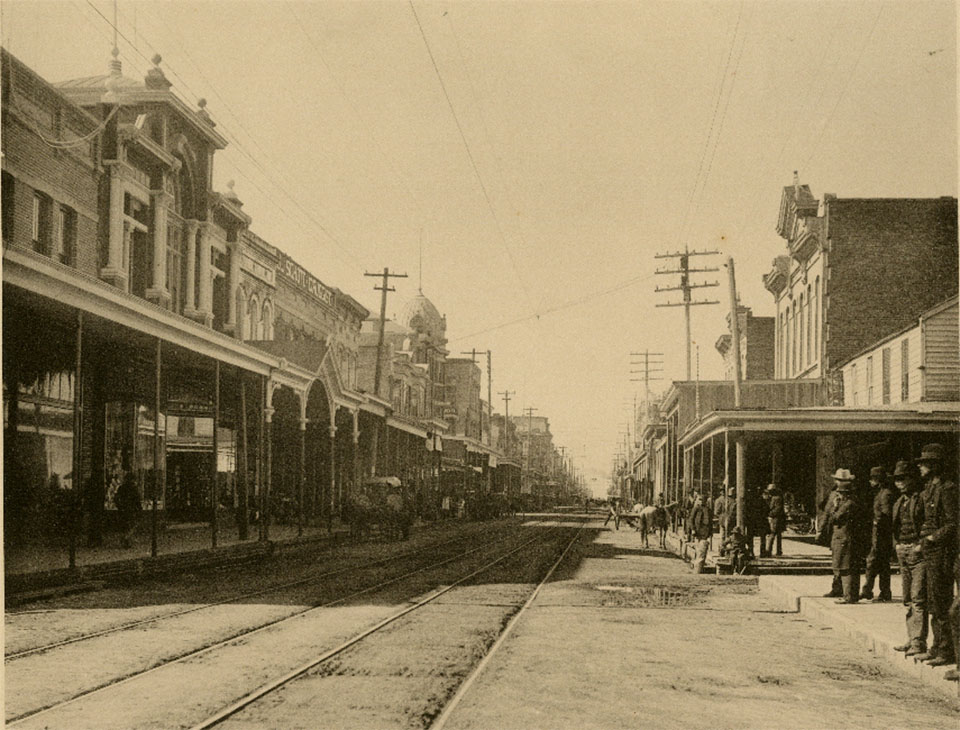
| A black and white photo of Market Street in the Historic Downtown Galveston from 1894 featuring the trolley tracks. | Photo taken by H.H. Morris. Courtesy of the Rosenberg Library and Museum |
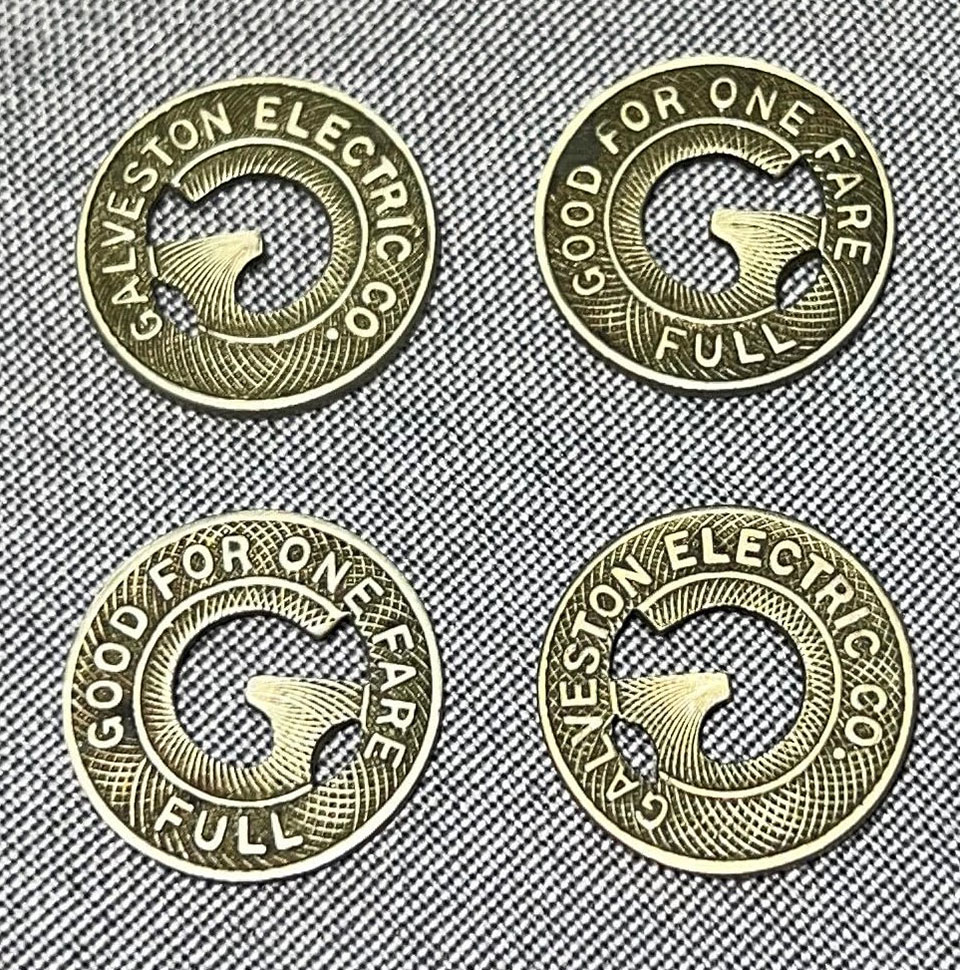
| The “Galveston Electric Co.” coins, with a cutout of the letter “G” were “Good For One Fare Full” in use/production in the 1930s. | Courtesy of the Rosenberg Library and Museum |
For several decades after, the island’s trolley system went without use, but a movement in the 70’s brought interest back. A push to revitalize and improve Galveston as a tourist destination began a successful campaign in the 1970s-80s. Many attractions came out of that push, such as the Strand, the Elissa, the Railroad Museum and Sea-Arama Marineworld. But among these, the return of the trolley caused some of the most engagement from the public.
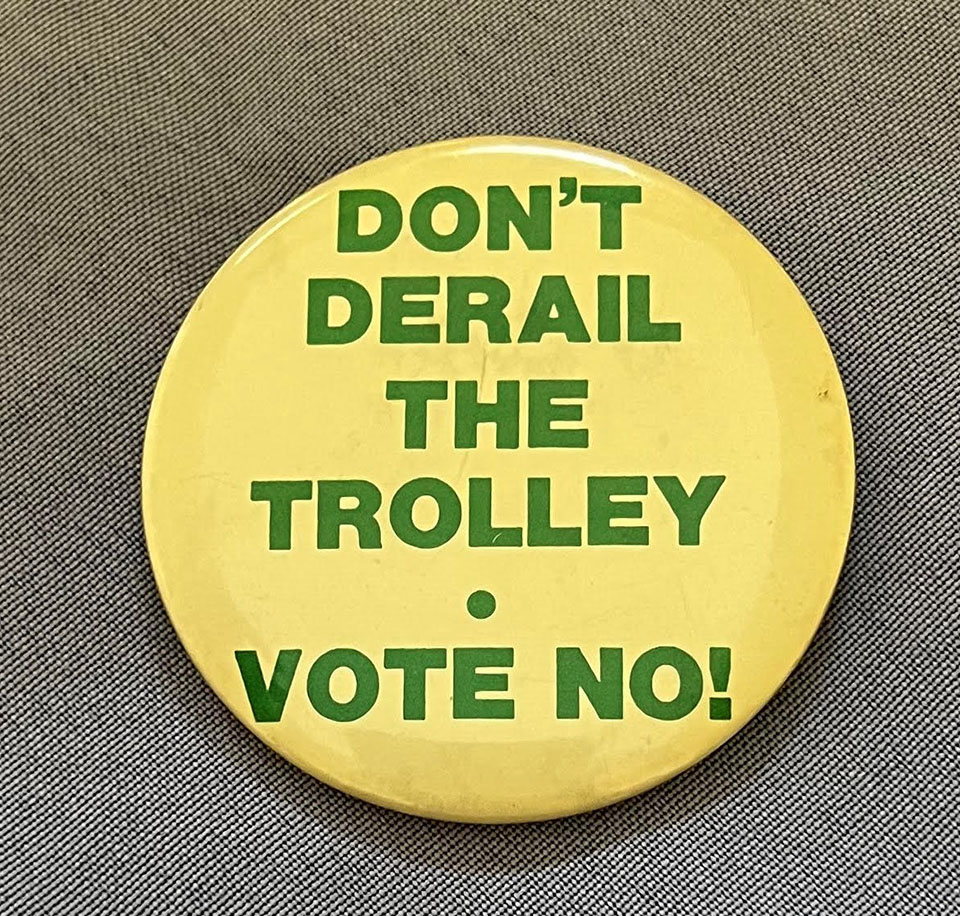
| Don’t Derail The Trolley – Vote No! Pin from the Saturday, July 11, 1987 Galveston Election. These pins and stickers were handed out by the Friends of the Trolley group. | Courtesy of the Rosenberg Library and Museum |
Numerous opinion pieces were submitted to the Galveston Daily News in favor of the trolley’s return, with belief from local residents and business owners that it would bring many benefits to the island. A few examples of these dated from January 15, 1987 included a small business owner who longed for a rise in the number of tourists visiting the island, a teacher who wanted to educate people about how the tourist related business taxes funded the school district, and a staff member for the San Luis Hotel who was excited for the Federal Grant and the benefits that the island would undoubtedly see.
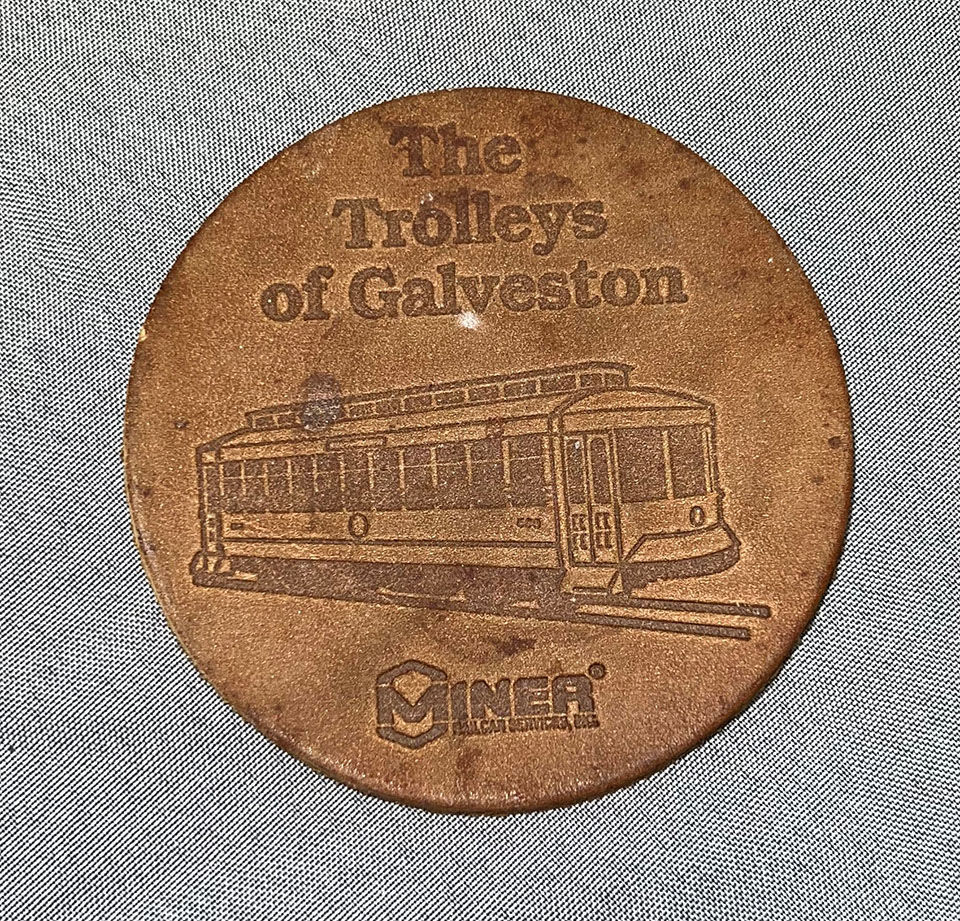
| The Miner Railroad Services, Inc, now Kasgro Rail Corporation, is the company that constructed the trolleys that we see in Galveston today and manufactures repair parts. The completed plans for the Galveston cars were transferred in the change of ownership, to this New Castle, Pennsylvania based company. | Courtesy of the Rosenberg Library and Museum |
Though people were in favor of the return of the trolley, it wasn’t without costs. While the trolleys would bring in significant revenue by taking tourists to new attractions, it would also cost significant funding to create the rail lines leading to those attractions. The issue became such a matter of public opinion and debate, that in 1987, Galveston’s first female Mayor Jan Coggeshall and four of her city council members were subject to a recall election. Originally, Coggeshall, inherited the trolley project reconstruction in 1984 when she was chosen by voters following the death of the previous mayor, Gus Manuel. But conflict of public opinion over the trolley rose as some favored the construction, while others were frustrated that the ambitious project was underway while areas of the island were in disrepair. Had Mayor Coggeshall and the city council members been recalled in this election, it is likely that the trolley route still would have been completed, but not without significant delays. They survived the recall however, and the trolley line was officially opened in 1988. The line expanded twice after that to include routes downtown and to the University of Texas Medical Branch campus.
In 2008, the trolley system suffered a major blow as Hurricane Ike damaged all four of the vintage trolleys. After delays and repairs out of state, the Galveston Island Trolley officially returned in 2021. Unlike the trolleys of the past, today’s “trolleys” are technically streetcars, since they no longer draw electric power from overhead cables. Rubber Wheel “trolleys” designed with the same vintage exterior can also be seen traveling the same historic lines as the streetcars, allowing more visitors the chance to enjoy the route. Despite these differences, the trolley route successfully serves as both a tourist attraction and convenient method of transportation, just as they were in the past.
The Treasure of the Month is located on the library’s historic second floor near the East Entrance. It can be viewed during regular library hours, 9:00 a.m. to 5:45 p.m. Monday through Saturday and from 9:00 a.m. – 8:45 p.m. on Tuesdays and Thursdays. For more information, please contact Ivy Albright, Museum Curator at 409.763.8854 Ext. 125 or at museum@rosenberg-library.org.
Trollbeads Bracelets
Luxury Vacation Rentals Available
Rosenberg Library
Rosenberg Library has offered over a century of community service to the Galveston area, and is the oldest public library in Texas in continuous operation. The building itself was dedicated on June 22, 1904, the birthday of its patron, Henry Rosenberg. The Moody Memorial Wing opened in 1971, more than doubling the floor space and allowing for a children’s library, a history center, several galleries to showcase museum collections, and later, a computer lab. The Library accepted its first museum piece shortly after it opened in 1904. Since then, thousands of rare and interesting objects from around the world have been added to the collection. Each month they display a “Treasure of the Month”. Learn more by visiting the Rosenberg Library page and the Gifts of Henry Rosenberg section.